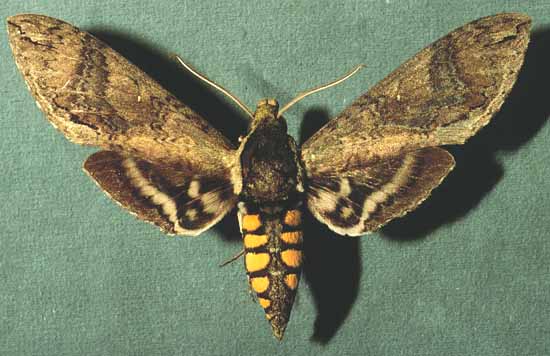
Manduca hannibal hannibal male courtesy of Dan Janzen.
This site has been created by Bill Oehlke.
Comments, suggestions and/or additional information are welcomed by Bill.
TAXONOMY:
Family: Sphingidae, Latreille, 1802 |
|
|
Updated as per http://biological-diversity.info/sphingidae.htm (Belize), November 2007 Updated as per Fauna Entomologica De Nicarauga, November 2007 Updated as per The Known Sphingidae of Costa Rica, November 2007 Updated as per CATE (description; Mexico, Ecuador, Peru, Brazil, Argentina); February 12, 2011 Updated as per Bold Systems (Ecuador, Peru, Bolivia, Brazil); February 2011 Updated as per Heteroceres de Guyane Francaise (French Guiana, Venezuela); February, 2011 Updated as per personal communication with Sergio D. Ríos Díaz in CATÁLOGO DE LOS SPHINGIDAE (INSECTA: LEPIDOPTERA) DEPOSITADOS EN EL MUSEO NACIONAL DE HISTORIA NATURAL DEL PARAGUAY; sent to me in July 2014 by Sergio D. Ríos Díaz. |

This site has been created by Bill Oehlke.
Comments, suggestions and/or additional information are welcomed by Bill.
TAXONOMY:
Family: Sphingidae, Latreille, 1802 |
DISTRIBUTION: Manduca hannibal hannibal (wingspan: males: 99-115mm, females: 106mm), flies in tropical rain forests | 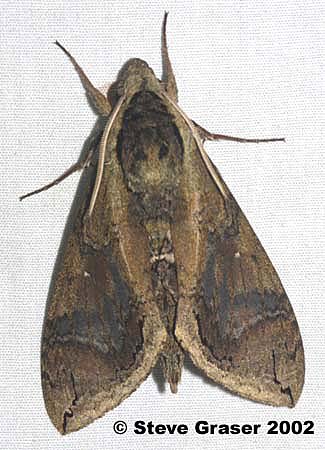 |
The most easily recognised species of the group though it is closely allied to [Manduca pellenia]." Antenna thinner and shorter than in Manduca pellenia. Foretarsus 1st segment with long spines not stout, with numerous short spines dorsal to them.No pulvillus. Hindwing upperside with whitish subbasal band more or less obviously interrupted; a generally rather large dirty white patch within the black central band near the anal angle. CATE
Subspecies hannibal hamilcar is from Rio de Janeiro, Brazil.
Subspecies hannibal mayeri is from Izabal, Guatemala.
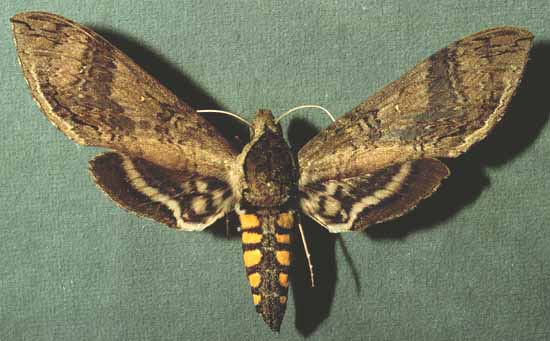
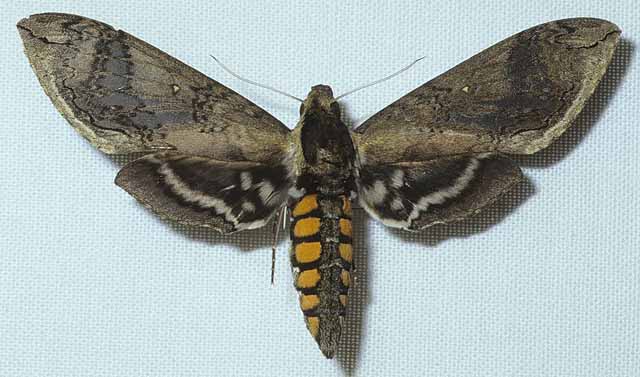
Manduca hannibal female, courtesy of Hubert Mayer.
Host plants: The larva has been described by Moss (1920) who has reared it on Cestrum floribundum, Datura cornigera (Solanaceae), Clerodendron flagrans, and Aegiphila elata (Verbenaceae).
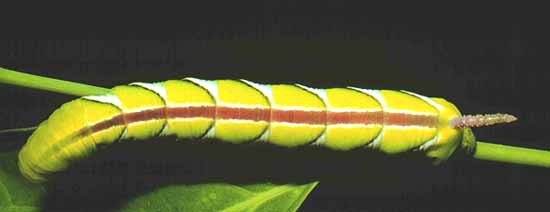

Larvae are subject to parasitization by Microplitis espinachi of the Braconidae family.
Use your browser "Back" button to return to the previous page.
Return to Sphingidae Index
Return to Sphingini Tribe
Use your browser "Back" button to return to the previous page.
This page is brought to you by Bill Oehlke and the WLSS. Pages are on space rented from Bizland. If you would like to become a "Patron of the Sphingidae Site", contact Bill.
Please send sightings/images to Bill. I will do my best to respond to requests for identification help.
Enjoy one of nature's wonderments: Live Saturniidae (Giant Silkmoth) cocoons.
 Show appreciation for this site by clicking on flashing butterfly to the left. The link will take you to a page with links to many insect sites. |